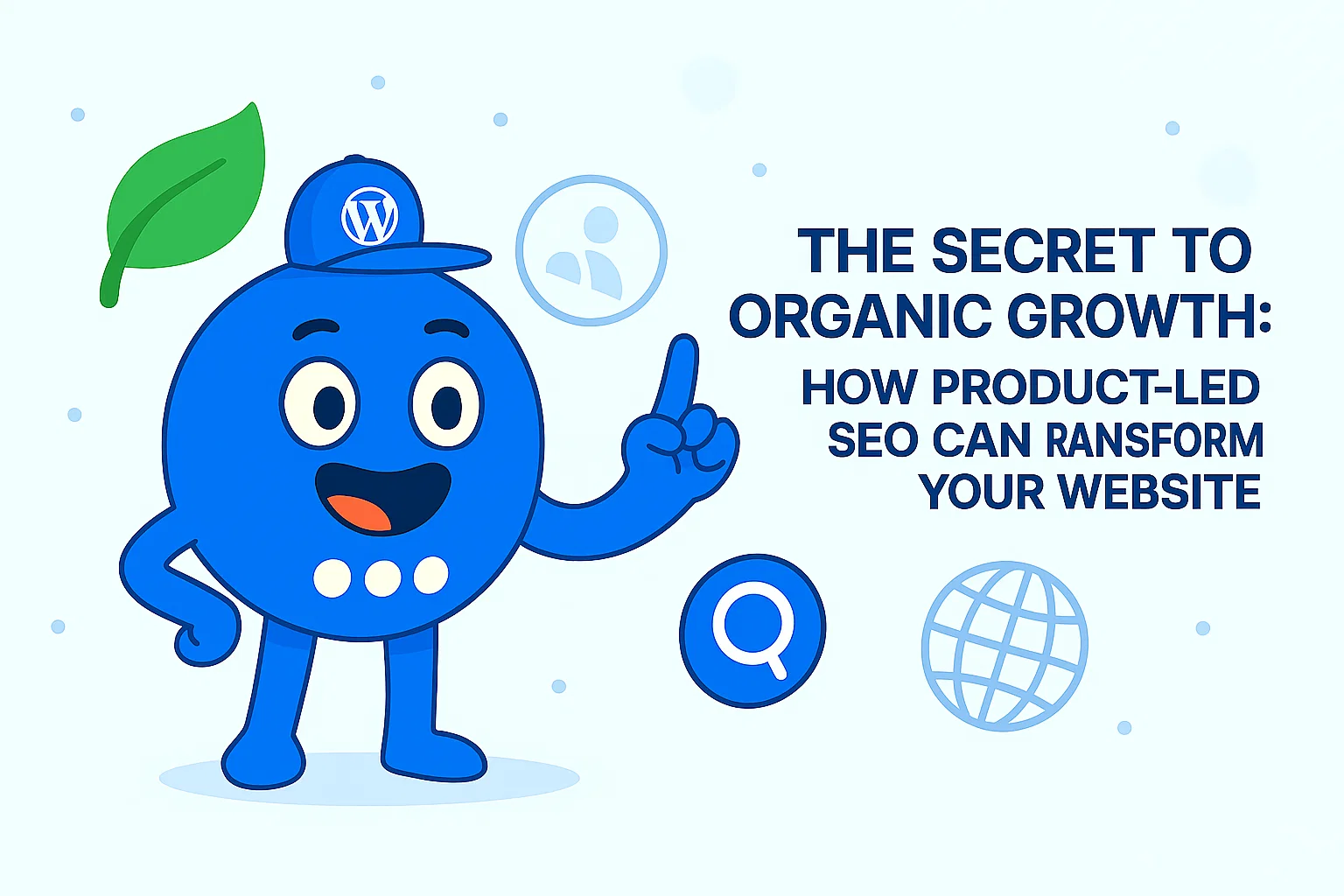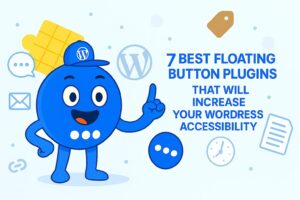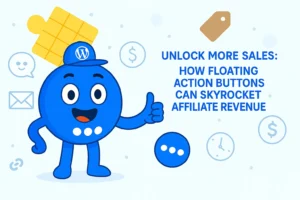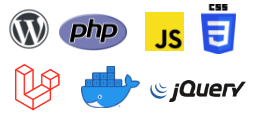The Secret to Organic Growth: How Product-Led SEO Can Transform Your Website
SEO, or Search Engine Optimization, is an essential part of any digital marketing strategy. It helps your website rank higher on search engine results pages (SERPs), bringing more traffic to your site and ultimately converting that traffic into customers. Traditional SEO methods often focus on content optimization, keywords, and backlinks. However, a newer, product-focused approach is gaining popularity: Product-Led SEO.
Product-Led SEO focuses on aligning your SEO efforts with your product’s strengths and features to increase visibility, attract the right audience, and drive meaningful traffic to your website. In today’s competitive digital landscape, businesses are shifting towards product-led strategies to enhance their organic reach and user engagement. This article explores how Product-Led SEO can transform your website’s visibility and drive growth.
Understanding Product-Led SEO
In today’s competitive digital landscape, SEO strategies are evolving, and businesses are shifting their focus from traditional content-driven SEO to a more dynamic approach: Product-Led SEO. But what exactly is Product-Led SEO, and how does it differ from the traditional SEO approaches? Let’s break it down.
What is Product-Led SEO?
Product-Led SEO is an SEO strategy that focuses on optimizing product-related content to increase search engine visibility and drive organic traffic to your website. Rather than solely relying on blog posts, generic content, or backlinks, this approach prioritizes the optimization of product pages, features, and customer experiences.
In essence, it’s about positioning your product as the star of your SEO strategy. It’s no longer just about crafting content for the sake of ranking; it’s about aligning product offerings directly with search intent. Whether it’s optimizing product descriptions, product-related content, or customer reviews, Product-Led SEO ensures that your products not only stand out but are also easy to find by potential customers looking for solutions your product provides.
This strategy works especially well for businesses that offer clear, tangible products or services. Instead of scattering SEO efforts across various content pieces, Product-Led SEO puts the spotlight on products themselves, ensuring they are front and center in search engine results.
Key Differences Between Traditional SEO and Product-Led SEO
Traditional SEO strategies often emphasize creating content that educates, informs, and engages users with keywords that target specific search queries. The focus is primarily on keyword optimization, backlinks, blog posts, and content that answers broad questions.
However, Product-Led SEO takes a more focused approach:
- Traditional SEO: Content-heavy and focused on answering queries through blog posts, informational pages, and news articles. The emphasis is on keywords that align with user searches.
- Product-Led SEO: Focuses on making your product the core of your SEO efforts. It optimizes the product itself—through landing pages, descriptions, reviews, and customer feedback—while aligning with search intent. The goal is not just to educate, but to drive qualified leads directly to the product pages.
How a Product-Led Approach Drives Organic Traffic
In traditional SEO, the aim is to rank high for a wide variety of keywords that are not necessarily connected to your product. While this strategy can help increase traffic, it may not always translate into conversions. For example, ranking for generic search terms like “best digital camera” might bring in traffic, but not necessarily users who are ready to purchase.
On the other hand, Product-Led SEO focuses on targeting more specific, high-intent keywords directly related to your product. These might include keywords like “buy the best digital camera online” or “affordable DSLR camera for beginners.” When your product pages are optimized for these types of queries, you’re more likely to attract visitors who are already in the purchasing mindset.
Here’s how Product-Led SEO helps with organic traffic:
- Higher Conversion Rates: By focusing on product-related keywords, you attract users who are actively looking for solutions your product offers. This not only increases organic traffic but also boosts your chances of converting those visitors into paying customers.
- Improved Search Rankings: Product pages optimized with relevant keywords, descriptions, and features tend to rank higher for product-specific searches. This ensures that when users search for something related to your offering, your product is more likely to show up in the search results.
- Longer User Engagement: When your product pages are optimized to provide comprehensive information about features, benefits, and use cases, visitors are more likely to stay on your website longer, reducing bounce rates and improving your SEO rankings.
- Targeting User Intent: Product-Led SEO is inherently aligned with user search intent. It attracts visitors who are looking for a specific product or solution, which means they are more likely to convert, compared to users searching for generic content.
The Product-Centric Mindset of Product-Led SEO
A key element of Product-Led SEO is adopting a product-centric mindset. This involves:
- Understanding Your Product: A deep understanding of your product’s unique value propositions is essential. What pain points does your product solve? What benefits does it offer? This will help you identify the right keywords and content that resonate with potential customers.
- Aligning Product Content with Customer Needs: The content surrounding your product should address customers’ questions and needs directly. For example, instead of focusing on generic blog content, create product-focused content like guides, tutorials, and comparison articles that clearly demonstrate how your product meets users’ needs.
- Optimizing Product Features and Benefits: Product descriptions should not just be simple lists of features; they should be compelling, highlighting how each feature can benefit the user. The more your product page aligns with what the user is searching for, the better the chances of ranking higher in search results.
- Social Proof and User Reviews: Incorporating user-generated content such as product reviews and testimonials is an excellent way to enhance Product-Led SEO. These elements provide fresh, valuable content and improve your page’s credibility and relevance.
Why Product-Led SEO is Crucial for Modern Businesses
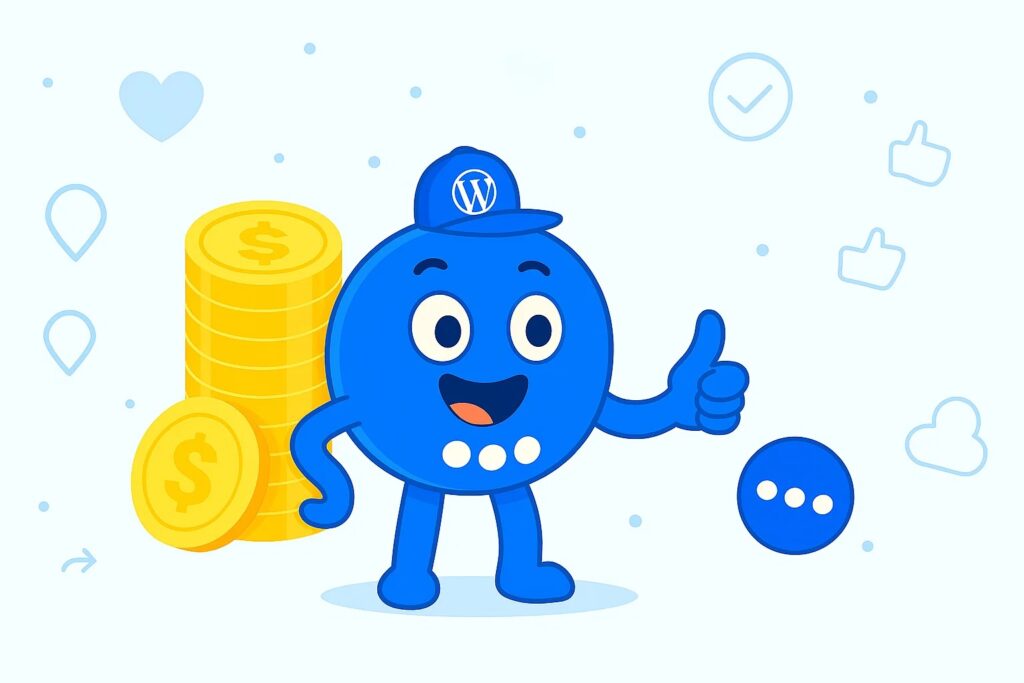
The Shift from Content-Led to Product-Led Strategies
For years, SEO strategies were heavily reliant on creating content to educate and inform potential customers. Businesses would produce blogs, articles, and long-form content with the goal of ranking for specific keywords. While this was effective for building brand awareness and attracting traffic, the digital landscape has become much more competitive. Customers are no longer just searching for general information; they are looking for solutions to their specific problems.
Enter Product-Led SEO, which shifts the focus from content-heavy tactics to product-centric strategies. With the increase in online shopping and direct-to-consumer business models, modern customers are becoming more informed and selective about the products they purchase. They don’t just want to read about a product—they want to engage with it, learn about its features, and understand how it will solve their problems.
This shift means businesses must start thinking beyond just content marketing. Instead, they need to prioritize how they can make their products easily discoverable and visible on search engines. Product-Led SEO directly addresses this need by optimizing product pages, focusing on product-centric keywords, and creating content that highlights product features, benefits, and customer success stories.
Customer-Centric Benefits of Product-Led SEO
One of the biggest advantages of Product-Led SEO is that it is inherently more customer-centric. In the past, businesses might have used SEO to drive traffic to their blog posts, offering helpful content but not necessarily addressing the direct needs of customers. With Product-Led SEO, the goal is to engage users directly by offering them exactly what they are searching for: solutions in the form of products.
Here are some ways in which Product-Led SEO benefits businesses from a customer-centric perspective:
- Meeting Customer Expectations: Modern consumers expect a seamless, intuitive experience when they visit a website. They don’t just want to read an article; they want to explore products, understand their features, and take action. Product-Led SEO ensures that businesses are not only meeting these expectations but exceeding them by offering optimized product pages that answer customers’ questions, showcase product benefits, and provide a clear path to purchase.
- Providing Relevant and Valuable Content: Instead of producing generic content, Product-Led SEO prioritizes content that is directly related to your products. By focusing on creating in-depth, product-focused content such as user guides, case studies, comparison articles, and reviews, businesses can provide immediate value to their visitors. This relevance enhances the likelihood of conversions since the content directly speaks to what customers are searching for.
- Improved User Experience: Customers now expect to find exactly what they’re looking for in as few clicks as possible. By optimizing product pages and aligning them with search intent, Product-Led SEO helps create a smoother, more user-friendly experience. For example, including clear calls to action, detailed product descriptions, and engaging multimedia (images, videos, etc.) can significantly improve the overall user experience, which is vital for keeping potential customers on the page and increasing the chances of conversion.
Real-World Examples of Businesses Succeeding with Product-Led SEO
Several companies have already embraced Product-Led SEO and have seen significant benefits in terms of traffic, engagement, and conversions. Here are a few examples:
- Shopify: As an e-commerce platform, Shopify understands that its users are actively searching for the best tools to set up and manage online stores. By focusing its SEO efforts on optimizing product-related content—like landing pages for their subscription plans, product reviews, and customer success stories—Shopify not only increases its visibility in search results but also ensures its pages speak directly to its target audience: entrepreneurs and small businesses. The result? Increased organic traffic, higher engagement, and a boost in conversions.
- Basecamp: Basecamp, a project management tool, uses a Product-Led SEO approach by optimizing its product pages with detailed explanations of how its software works, customer case studies, and product features. Instead of focusing solely on generic content like “project management tips,” Basecamp aligns its SEO efforts with specific queries about its product. As a result, users who find Basecamp via search engines are more likely to be high-intent visitors who are ready to engage with the software.
- Airbnb: Airbnb’s SEO strategy emphasizes optimizing product pages for specific accommodations, experiences, and locations. By creating content around these products, such as detailed descriptions, high-quality photos, and customer reviews, Airbnb not only attracts relevant traffic but also enhances the overall booking experience. Users who search for specific accommodations or vacation rentals are more likely to convert when they find pages that are directly relevant to their needs.
The Role of Search Intent in Product-Led SEO
A key component of Product-Led SEO is its alignment with search intent. Search intent refers to the underlying goal or purpose behind a user’s search query. Are they looking for information, or are they ready to make a purchase? Product-Led SEO recognizes the importance of this distinction and tailors content to attract users with high purchase intent.
When users search for terms like “buy [product name]” or “best [product category] for [specific use],” they are already demonstrating strong purchase intent. Optimizing for these high-intent keywords ensures that businesses attract customers who are more likely to convert, as they are searching with a clear purpose in mind.
Product-Led SEO and Long-Term Sustainability
Unlike traditional SEO tactics that may focus on short-term gains, Product-Led SEO offers long-term sustainability. By continuously optimizing product pages, improving product content, and aligning with customer needs, businesses can build a solid foundation for consistent, organic growth. Over time, this approach helps businesses establish a strong online presence, build credibility, and foster customer loyalty—all of which contribute to long-term success.
By focusing on the product itself and creating a website that is directly tailored to customer needs and search intent, businesses can maintain a steady flow of qualified traffic, increase engagement, and ensure that their products are always discoverable.
How to Implement Product-Led SEO

Implementing Product-Led SEO requires a shift in mindset and strategy. Unlike traditional SEO, which is often centered around blog posts, articles, and backlinks, Product-Led SEO focuses on optimizing your product and product-related content to attract and convert visitors. This approach ensures that your products are discoverable, relevant, and appealing to your target audience when they search online. Below are key steps to successfully implement Product-Led SEO for your business.
- Understanding Your Product and Its Value Propositions
The first and most important step in implementing Product-Led SEO is to understand your product inside and out. This step forms the foundation of your SEO strategy because it helps you determine how to best communicate your product’s value to potential customers.
- Identify Pain Points: What problems does your product solve? Understanding the pain points your product addresses will help you create content that resonates with users who are looking for solutions. For example, if you sell a time management tool, you can focus your SEO efforts on users searching for solutions to improve productivity.
- Highlight Unique Selling Points (USPs): What sets your product apart from the competition? Is it the price, quality, features, or customer service? By identifying and emphasizing these unique selling points, you can tailor your product content to highlight these advantages and attract customers who are actively looking for specific features.
- Define the Benefits: Customers are more interested in how a product will benefit them than in its features. Make sure you can clearly articulate the benefits of your product—whether it saves time, improves efficiency, or enhances quality of life. This will help align your content with the searches and needs of your target audience.
- Aligning Product Content with Search Intent
Once you understand your product and its unique value propositions, it’s time to align your content with the search intent of your target audience. This means crafting your product pages and related content around the specific needs and questions customers have when they search online.
- Conduct Keyword Research: Use keyword research tools like Google Keyword Planner, SEMrush, or Ahrefs to find keywords that are relevant to your product. Focus on high-intent keywords that show clear purchase intent, such as “buy [product name]” or “best [product category] for [specific need].” Understanding which terms your target customers are searching for will help you optimize your product pages effectively.
- Optimize Product Pages for Search: Product pages are the heart of Product-Led SEO. Make sure each page includes relevant keywords in titles, descriptions, and headers. But it’s not just about keywords—ensure your content answers the customer’s query by clearly outlining product benefits, features, and use cases. The goal is to make your product pages informative, easy to navigate, and optimized for both search engines and users.
- Focus on User Experience (UX): In addition to using the right keywords, ensure that your product pages provide an excellent user experience. This includes fast loading times, mobile optimization, easy navigation, and clear calls to action (CTAs) like “Buy Now” or “Learn More.” A well-designed product page not only improves your SEO but also increases the likelihood that visitors will convert into customers.
- Creating Product-Centric Content that Attracts and Engages Users
Creating content around your product is a crucial element of Product-Led SEO. However, unlike traditional content marketing, which focuses on general educational content, your product-related content should directly demonstrate how your product solves customers’ problems and meets their needs.
- Product Pages and Descriptions: Ensure that your product pages are thorough and informative. Don’t just list features—highlight how these features benefit the customer. Use high-quality images and videos to give users a closer look at the product. You can also include features like comparison tables or product specifications to provide more context.
- Case Studies and Testimonials: Including customer success stories and testimonials on your product pages can greatly improve the effectiveness of your Product-Led SEO strategy. Case studies and reviews provide social proof that your product works, which can help convert visitors who may be on the fence. Encourage satisfied customers to leave reviews and share their experiences on your website.
- How-to Guides and Tutorials: Another effective form of product-centric content is creating how-to guides or tutorials that explain how to use your product. These types of content not only provide value but also increase the chances of ranking for long-tail keywords that people search for when looking for solutions. For example, if you sell a fitness tracker, creating a guide on “How to Use Your Fitness Tracker for Better Health” can attract customers who need help getting the most out of your product.
- Product Demos and Videos: Video content is incredibly engaging and can help you demonstrate your product’s value in a dynamic way. By including videos on your product pages or in your content, you provide customers with a better understanding of how your product works. Videos can also improve time-on-page and reduce bounce rates, which are positive signals for search engines.
- Optimizing Product Pages with Features and Reviews
One of the most important aspects of Product-Led SEO is ensuring that your product pages are not only optimized for search engines but also feature content that appeals to users.
- Product Features and Benefits: Be sure to clearly list your product’s features and benefits on the product page. This makes it easier for both search engines and customers to understand what the product does and how it can help solve their problems. Use bullet points or tabs to organize the information for better readability.
- Incorporating User Reviews: User reviews are a great way to build trust and improve your product pages’ SEO performance. Fresh content like reviews can help improve your ranking in search engines, while also providing real-world validation of your product. Encourage users to leave reviews, and feature them prominently on your product pages.
- Schema Markup: Implementing schema markup on your product pages allows search engines to better understand your content, leading to enhanced visibility in search results. This can lead to rich snippets, which are eye-catching features in search results that increase click-through rates (CTRs).
Leveraging Floating Awesome Button (FAB) to Boost Engagement
Floating Awesome Button (Sticky Button, Popup, Toast) & +100 Website Custom Interactive Element
In the realm of Product-Led SEO, engaging website visitors and encouraging them to take action is just as important as optimizing your content for search engines. A great way to facilitate this is by using interactive tools that enhance user experience and prompt conversions. One such tool is the Floating Awesome Button (FAB). FAB is a simple yet powerful WordPress plugin that enables you to add customizable buttons to your website that stay visible as users scroll. This ensures that no matter where visitors are on your site, they can easily take action, whether it’s contacting you, signing up for your newsletter, or quickly navigating back to the top of the page.
Let’s explore how leveraging FAB can boost engagement on your product pages and complement your Product-Led SEO strategy.
- Making Call-to-Actions (CTAs) Highly Visible
One of the key goals of Product-Led SEO is to optimize product pages so that visitors can quickly find the information they need and act on it. Whether it’s purchasing a product, subscribing to a newsletter, or contacting support, your calls to action (CTAs) must be highly visible and accessible. The Floating Awesome Button (FAB) helps achieve this by ensuring your CTA buttons are always visible, no matter where a user is on the page.
- Constant Visibility: With FAB, your CTA buttons remain in the user’s view as they scroll through the page, preventing them from getting lost or ignored. For example, if you’re selling a product, a floating “Buy Now” or “Learn More” button ensures that visitors can make a purchase decision without needing to scroll back to the top or navigate to another page.
- Effective CTAs: Since FAB buttons are customizable, you can make them stand out with different colors, sizes, and shapes. This ensures that your CTA button grabs the user’s attention at the right time. For example, you could have a FAB button that encourages visitors to contact you for more information on a product or a FAB button that takes them directly to a checkout page.
- Creating Seamless User Experience
User experience (UX) plays a vital role in both SEO rankings and conversion rates. If users find it difficult to interact with your site, they’re likely to leave without taking the desired action. FAB enhances the UX by keeping essential buttons accessible without interrupting the content. The floating nature of the buttons allows users to engage with your website’s key actions while seamlessly browsing through the product pages.
- Non-Intrusive Design: FAB allows you to place buttons that won’t obstruct the main content of your page. The button can be configured to appear in a corner of the screen, floating above the content, so it never gets in the way of what the user is reading or viewing. This creates a smooth experience where users can interact with the website as they wish while still being reminded of key actions.
- Quick Navigation: If your product pages are long, having a floating “Back to Top” button ensures that visitors can easily navigate the page without the need to scroll all the way back up. This simple convenience can reduce friction in the user journey and make visitors more likely to stay engaged with your site.
- Encouraging Instant Action and Boosting Conversions
FAB is particularly valuable for businesses focusing on driving conversions directly from their product pages. By making it easy for visitors to take immediate action, you can increase the chances of converting those visitors into paying customers.
- One-Click Actions: FAB allows you to set up buttons that facilitate one-click actions like “Add to Cart,” “Request a Demo,” or “Subscribe.” By eliminating extra steps, you streamline the conversion process, making it easier for visitors to engage with your product offerings and take the next step without hesitation.
- Customizable Pop-ups and Toasts: Another powerful feature of FAB is the ability to trigger pop-ups or toasts that grab attention and prompt action. These attention-grabbing notifications can display limited-time offers, special promotions, or product reminders that entice visitors to make a purchase. For example, after a user has spent a certain amount of time on a product page, you can have a FAB-triggered popup offering a discount code to encourage them to buy.
- Form Submissions: Whether it’s a contact form or a subscription form, FAB buttons can be linked directly to forms that visitors can fill out with a single click. This is particularly useful if you want to capture leads or encourage visitors to sign up for newsletters and updates. For instance, a “Sign Up for More Info” FAB button on your product page can lead directly to a quick form submission, helping you build an email list for future marketing.
- Enhancing Mobile and Desktop User Engagement
In the age of mobile-first indexing and widespread mobile device usage, ensuring that your website is optimized for both desktop and mobile devices is essential. FAB offers responsive designs that work seamlessly across devices, meaning your buttons will remain accessible regardless of screen size.
- Mobile-Friendly: FAB is optimized for mobile use, ensuring that buttons are not too large or intrusive on smaller screens. On mobile, FAB buttons still remain easily clickable without interfering with the content users are viewing. This responsive feature is important because more and more users are browsing and shopping on mobile devices, and you want to ensure a smooth experience for them.
- Improving Mobile Conversions: FAB’s mobile compatibility is particularly useful for driving mobile conversions. For example, a floating “Call Us Now” button on a mobile product page allows users to reach your sales team with a single click, improving engagement and potentially converting leads directly from their mobile device.


